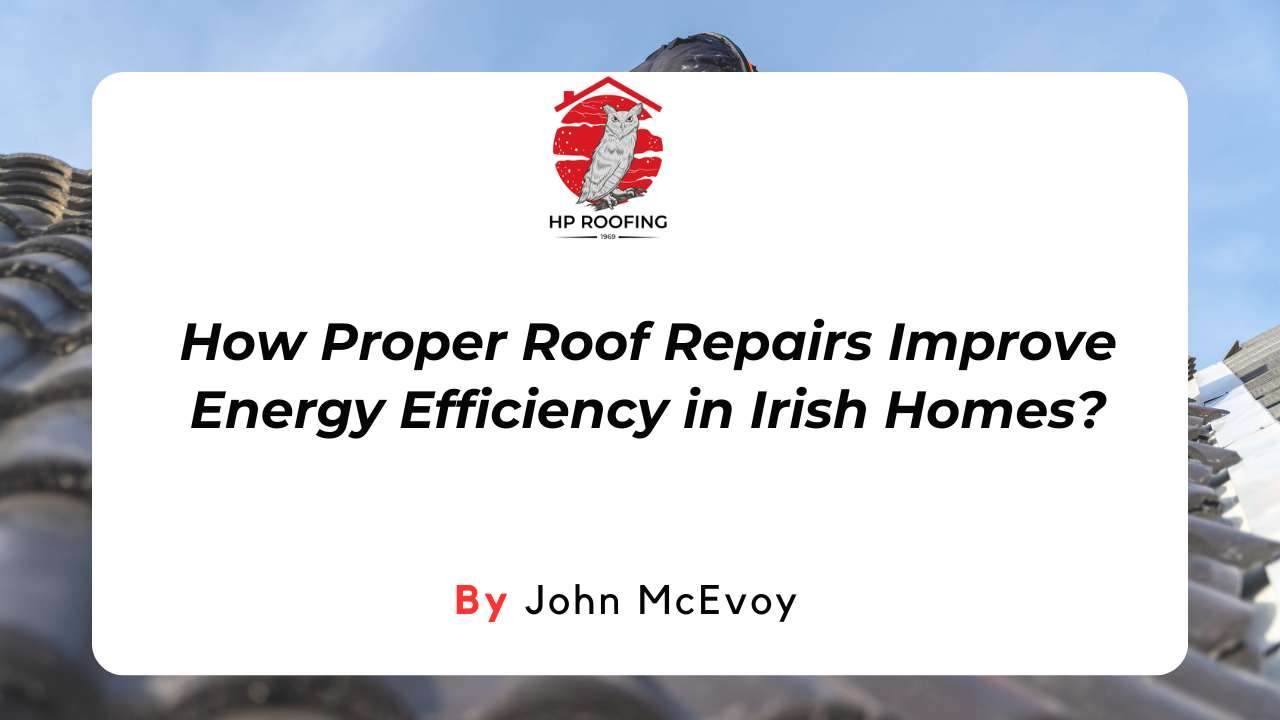Are you dealing with leaks, ponding water, or cracks on your flat roof and trying to figure out the best solution? Flat roofs are popular for their modern look, cost-effectiveness, and versatility, but they also come with unique maintenance challenges.
Flat roofs offer the advantage of being easier to install, more affordable than pitched roofs, and often provide additional outdoor living or storage space. This makes them a practical option for many property owners across Ireland.
However, understanding the correct repair methods is crucial to protecting your property and avoiding expensive damage. In this blog, we will explore what is the best way to repair a flat roof, common flat roof issues, and provide expert maintenance tips to help you extend the lifespan of your roof.
What Are the Most Common Flat Roof Issues?
Flat roofs are durable and cost-effective, but like any roofing system, they are not without their challenges. Understanding the most common issues will help you spot problems early and decide on the right repair approach.
Leaks
Leaks are the most frequent issue with flat roofs due to their minimal slope, which makes water drainage less effective. Even small cracks or punctures in the surface can allow water to seep through, leading to dampness, mould, and structural damage. Regular inspections and timely repairs are essential to prevent minor leaks from turning into major problems.
Membrane Damage
The roofing membrane is your flat roof’s primary waterproofing layer. Over time, exposure to UV rays, temperature fluctuations, or physical stress can cause it to blister, crack, or tear. Damaged membranes compromise your roof’s ability to keep water out, and leaving these issues unresolved can significantly shorten the roof’s lifespan.
Flashing Issues
Flashing protects the vulnerable junctions between your roof and vertical surfaces like walls, chimneys, or skylights. If flashing becomes loose, corroded, or improperly installed, it can create openings where water can penetrate. Regularly checking flashing is crucial to maintaining a watertight seal.
Insulation and Ventilation
Flat roofs without proper insulation and ventilation are prone to heat loss in winter and excess heat build-up in summer. Poor ventilation can also lead to condensation within the roof structure, causing rot, mould, and reduced energy efficiency. Investing in high-quality insulation and ensuring consistent airflow can prevent costly long-term damage.
What is the Best Way to Repair a Flat Roof?

Repairing a flat roof may seem challenging, but following a clear process ensures better results and longer-lasting protection. By approaching each stage carefully, you can prevent recurring issues and save money on costly replacements.
Identify the Problem
The first step is to carry out a thorough inspection of your flat roof. Look for signs such as pooling water, cracks, tears in the membrane, or areas where flashing has lifted. Identifying the exact source of the issue prevents you from applying quick fixes that do not address the root cause.
Clean the Area
Before starting repairs, the affected area must be cleaned properly. Remove dirt, moss, and debris that may interfere with adhesion. A clean surface ensures that repair materials bond securely, creating a more effective and watertight seal.
Patch Small Leaks
For small punctures or minor tears, patching is often sufficient. Depending on the roof type such as EPDM, felt, or fibreglass, you can use compatible repair patches or roofing tape. This approach works best for isolated problems and can extend the life of your roof significantly.
Deal with Larger Areas
If the damage is more widespread, simply patching will not be enough. Larger areas may require replacing sections of the roofing membrane or overlaying with new material. In such cases, professional roofers can assess whether repair or partial replacement is the most cost-effective option.
Apply Sealant
Roofing sealants are used to reinforce the repair and provide additional waterproofing. Applying a liquid sealant over seams and repaired areas helps prevent future leaks. It is essential to choose the right type of sealant for your roof material to ensure long-term effectiveness.
Inspect Your Work
Once the repair is complete, carry out a final inspection. Check for gaps, bubbles, or missed sections that could cause future leaks. Testing the roof with a small amount of water can confirm whether the repair is watertight. A detailed inspection guarantees that the repair has been done correctly and will last.
What Are the Best Preventative Tips to Protect Your Flat Roof?
Flat roofs can last for decades if they are properly maintained and cared for. By following simple preventative steps, you can avoid costly repairs and extend the overall lifespan of your roof.
Schedule Regular Inspections
Checking your roof at least twice a year, especially after storms, helps detect small issues before they become major problems. A professional inspection can reveal hidden damage, worn membranes, or early signs of leaks that may not be obvious to the untrained eye.
Keep Gutters and Drains Clear

Blocked gutters or drainage outlets are one of the main reasons flat roofs fail prematurely. When water has nowhere to go, it pools on the surface and weakens the roof structure. Clearing debris regularly ensures efficient water flow and protects against unnecessary water damage.
Remove Debris Promptly
Leaves, branches, and moss may seem harmless, but they hold moisture that accelerates roof deterioration. Removing debris keeps the surface clean, prevents ponding, and reduces the risk of organic growth taking hold on the membrane.
Professional Maintenance
A preventative maintenance plan with a qualified roofing contractor provides long-term confidence in your roof’s performance. Professional roofers not only carry out small repairs during maintenance visits but also apply protective coatings and ensure that flashing, insulation, and ventilation remain in excellent condition.
Conclusion
Flat roofs are a practical and cost-effective choice, but they do require regular care to stay in top condition. From identifying leaks and patching small issues to applying sealants and scheduling inspections, knowing what is the best way to repair a flat roof can save you time, money, and stress. Preventative maintenance, proper drainage, and timely professional repairs are key to extending the lifespan of your roof.
Contact HP Roofing for professional flat roof repair services in Ireland and let our experienced team protect your home or business with durable, cost-effective solutions.
















